
Trip to Cuba and New Orleans
Mike and Judy Henderson
January 25 to February 8, 2016
For today's discussion I'm going to tackle a delicate subject - restrooms. Restrooms in Cuba vary from clean and modern to pretty awful - but I've seen much worse in some cafes in Paris. In the hotels they're pretty good (I'm not talking about the facilities in your room, I'm talking about the public restrooms).
But one thing that's hard to figure out is that many, even in a very nice restaurant, will not have a toilet seat. Here's a picture of a toilet in a very nice restaurant that we had dinner in one night. As you can see, the stall is clean, modern and well provisioned. And the toilet itself is clean and modern - just no toilet seat. The women in the group report that the facilities in the women's restroom were the same, PLUS you often have to purchase toilet paper. The lack of a toilet seat in the men's room includes restrooms with urinals. In addition, you are strongly encouraged not to put used tissue into the bowl, but in a receptacle always provided, and which is emptied by the attendant as you leave. Don't forget to contribute a coin for their services.
[Update 12/1/2024: A knowledgeable Cuba traveler told me that the reason the toilets don't have standard toilet seats is that the seats get stolen.]
In some places we visited, such as the Cuban dance facilities I talked about earlier, the water in the sink will not work. Turning the faucet produces nothing. And, of course, soap for washing your hands is usually not available, except in the really upscale restrooms. [I suppose that the soap will get stolen, also.]

++++++++++++++++++++++++++++++++++++++++++++++++
2/1/2016 Today is our last full day in Cuba. We're scheduled to visit an elementary school, a day care center run by Catholic nuns, an art museum, and Hemingway's house in the countryside.
First was the elementary school. The school was once a home, and became government property in 1959. Walkeys' eleven year old daughter attends this school.

We met with the principal and one of the administrators.
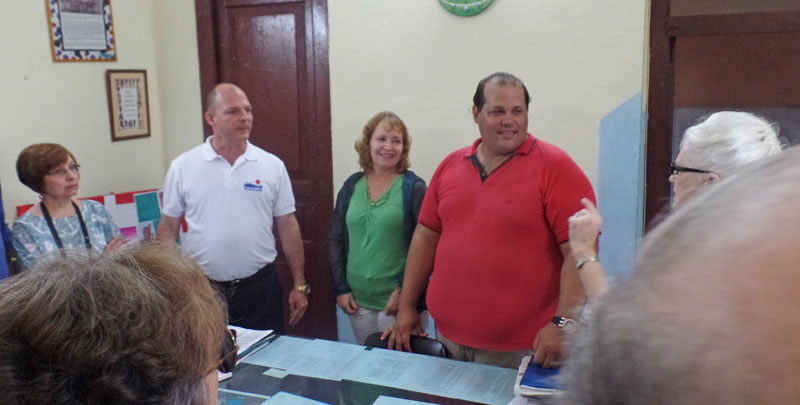
And then visited a first-class classroom. Students wear uniforms and the colors represent the level. So elementary students, no matter what school they go to, all wear the same color. Middle school students wear a different color and high school students another color. Students go the school nearest their residence. They are taught cursive writing from the very begninning.
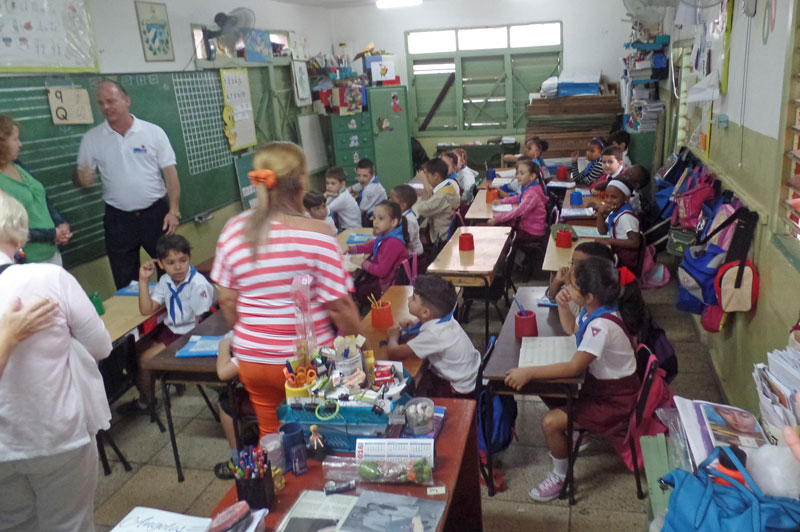
One of the students stood before the class and recited a poem in Spanish. She was very self-assured - and very cute!

Walkys and his daughter.
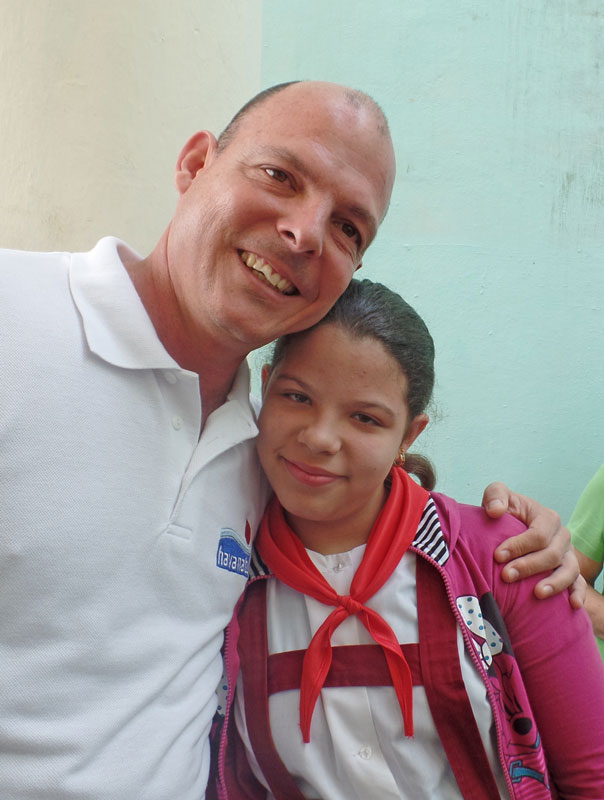
I'm going to interrupt to tell a story that Walkys related. He and his wife wanted to buy a house. But in Cuba, you can only purchase a house from a family member. He and his wife found a house that an older man wanted to sell. So Walkys' mother went into court and testified that she had had an affair with that older man and Walkys was the child from that affair (she had never met him before). So Walkys and his wife were able to buy the house and the older man was able to get some money for his retirement.
The Cuban people are bright and enterprising. If they were allowed to do things, such as start a business, they could achieve a lot.
Now, back to our trip.
Then we went to a Catholic day care center. Children here range from one year old to about five (when they would enter kindergarten).

For many years Catholic nuns were not allowed to operate any type of facility in Cuba, but recently (around 2000) they were allowed to operate day care centers. I believe they had to convince the authorities that they would not teach anything that conflicted with the socialist teachings in the higher levels of school. They do, of course, teach religion.
We met the nun who is the Mother of the order in Havana. She explained the history of the order, how it had been prohibited right after the revolution, and their efforts to get back to Cuba and establish the day care centers. She had some gestures, which I didn't capture in pictures, that reminded me of the head nun in the movie "Blues Brothers".
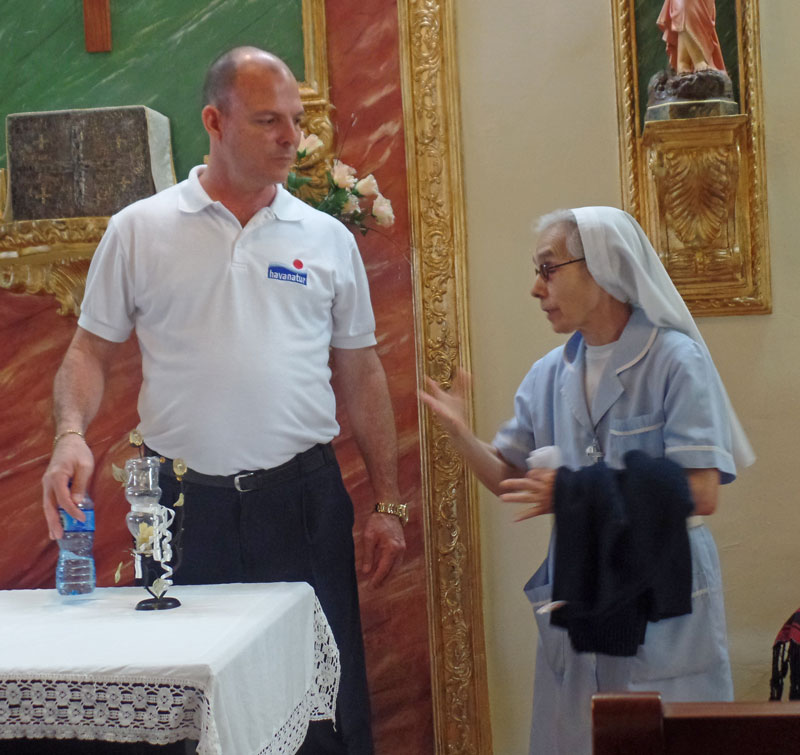
After we left the day care center, we walked to a square where the buildings are being renovated.
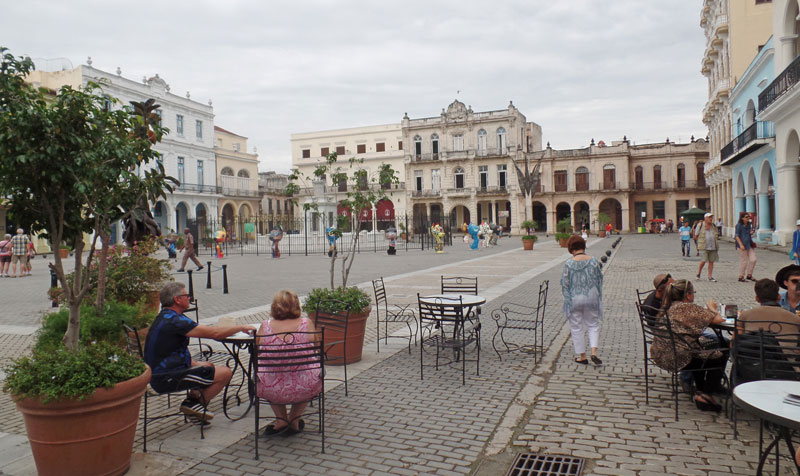
Many of the buildings have banners showing before and after pictures.
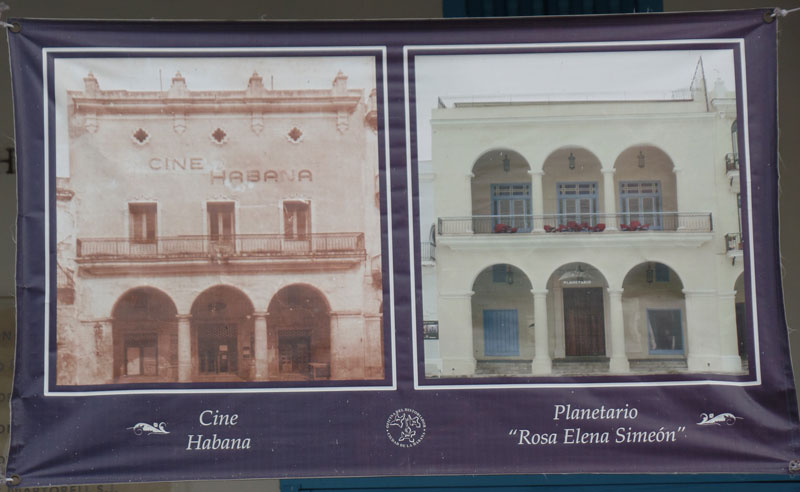
And our picture of the building.

There was a woman in traditional dress in the square and I snapped her picture. She's an "actor" for tourists and wanted me to pay her for taking her picture.
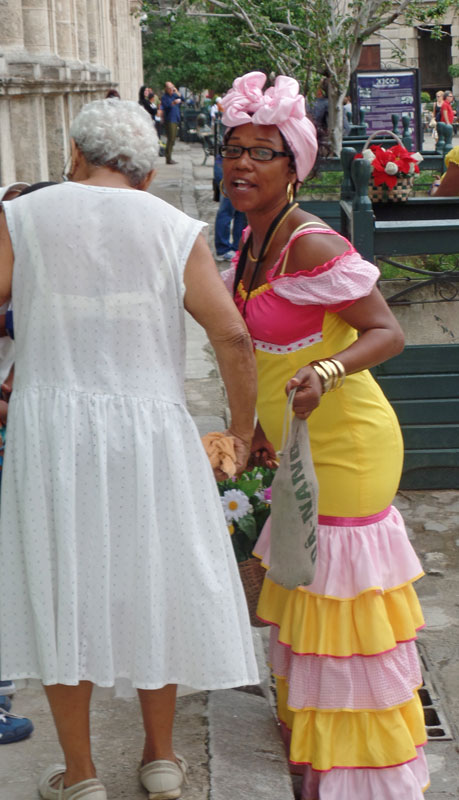
We were scheduled to go to the Havana art museum but when we arrived, it was closed.
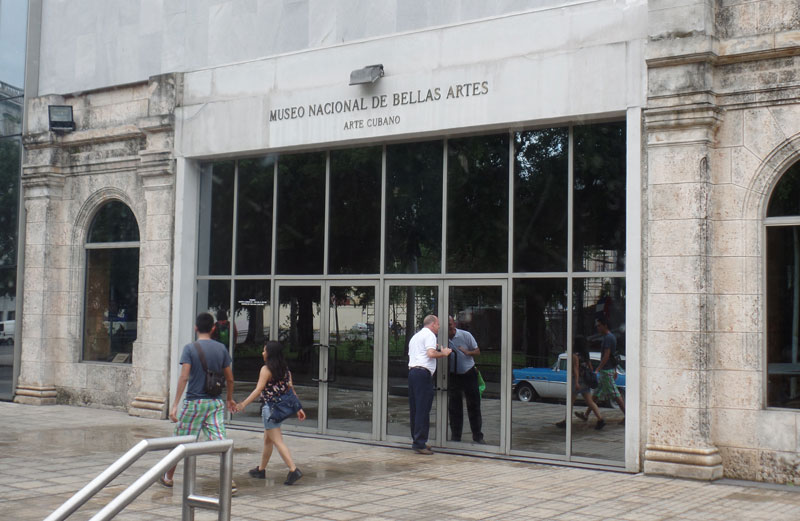
Our guide assured us the museum was supposed to be open but "this is Cuba" so we drove to the area of the United States Embassy.
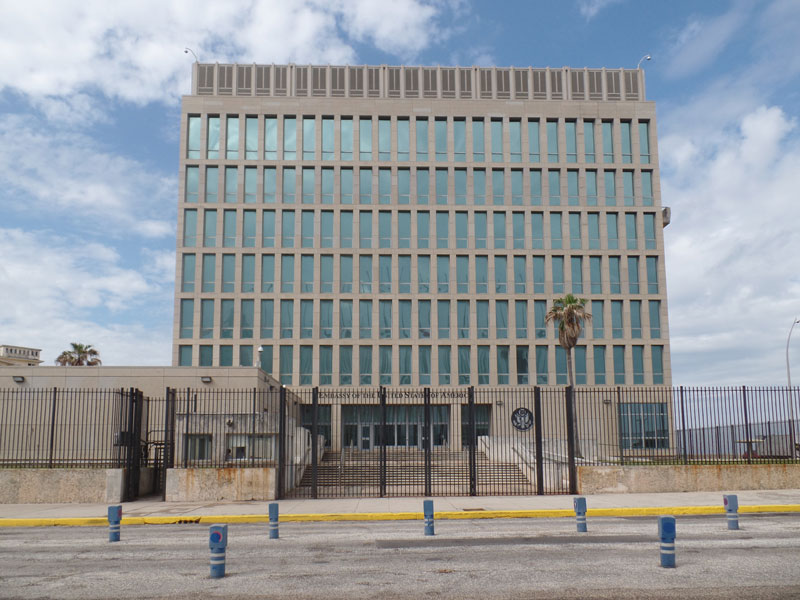

There were many people lined up to apply for a visa to visit the US, or had other business at the embassy. Our guide explained that it's extremely difficult to get a visa to the US because of the "Wet Foot, Dry Foot" policy towards Cubans. Any Cuban who could set foot on US soil is unlikely to return to Cuba.
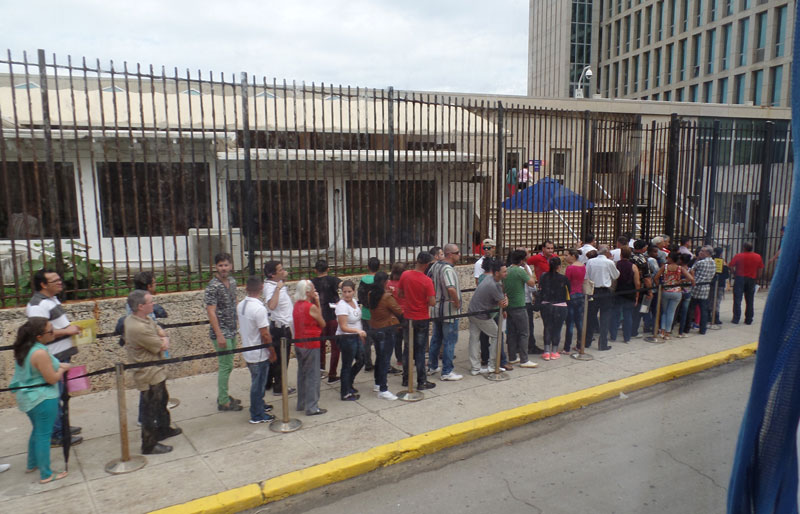
Then it was lunch time and we went to a privately owned restaurant.
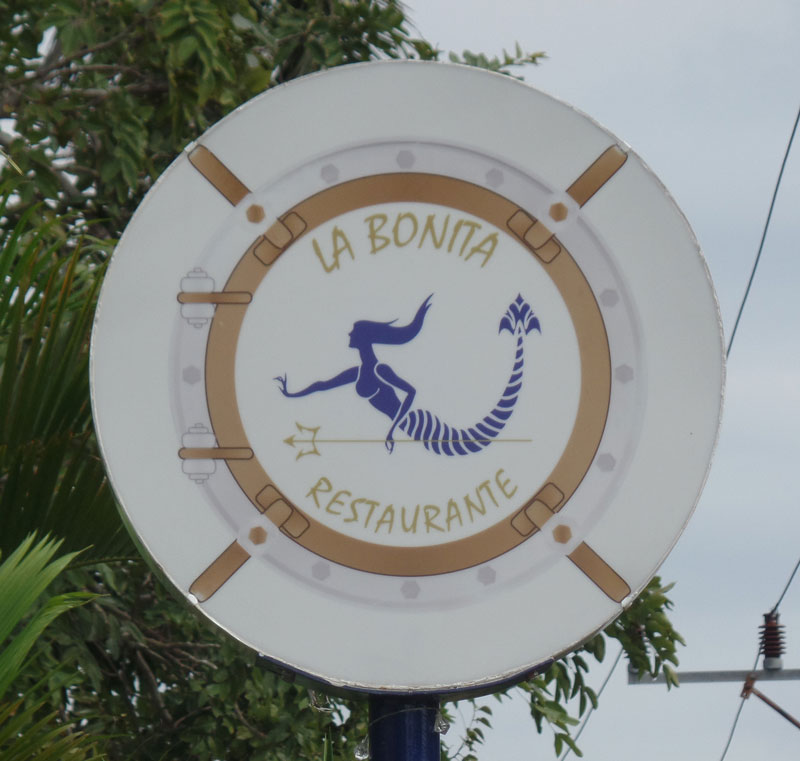
The restaurant was clean and modern, and the food was good. Cuba is opening up a number of business areas that can be privately owned, but all are in the service sector and most cater to tourists.

The last stop on our tourist itinerary was Hemingway's house, known as the Finca Vigia Ranch. It was a large estate on the outskirts of Havana which he purchased from a French family for $12,500 with proceeds from "For Whom the Bell Tolls". He lived here from the 1930's to 1961 (he committed suicide in Idaho in 1962). I took many pictures but I won't bore you with most of them.

Hemingway's boat, which he gave to the Cuban captain who worked for him.
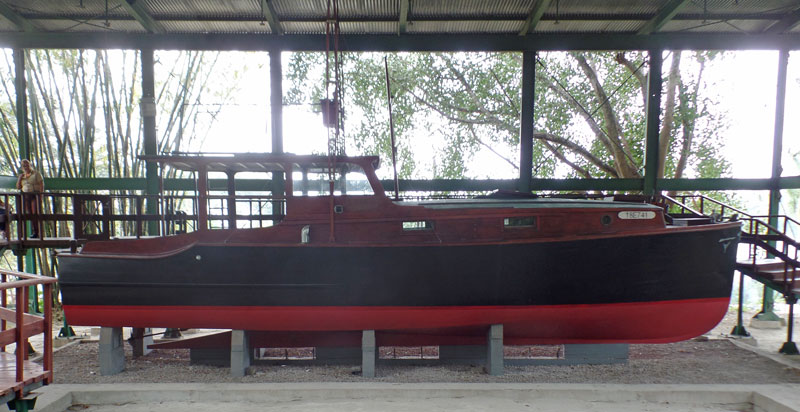

As we were leaving I saw a 1946 Ford in the parking lot. I noticed it because I had owned a 1946 Ford - but a sedan and not a convertible - many years ago. Mine was black and never looked this nice.
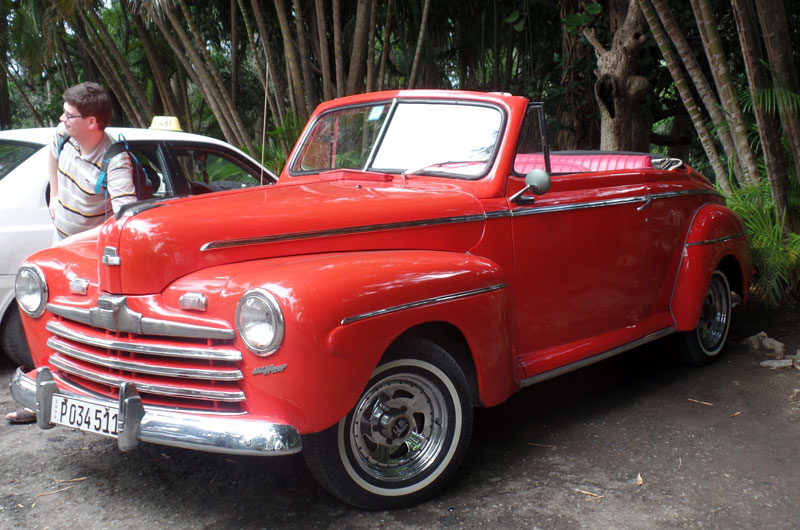
We returned to the hotel earlier than usual so that everyone could rest before our "farewell" dinner that evening.
We found that we were to be taken to dinner in the old American cars.

It was a very interesting experience, but those old cars ride rough. You'd never want to use one every day in the US.
Dinner was at a nice privately owned restaurant. The word "Paladar" indicates that the restaurant is privately owned.
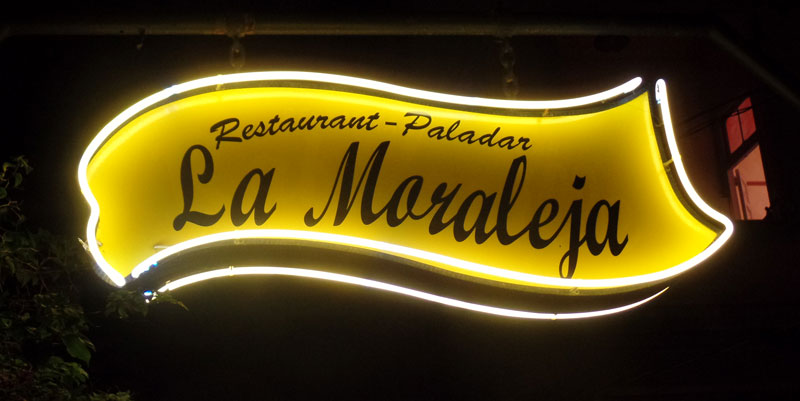
The inside of the restaurant. Walkys is summarizing the ten days of our trip. He was a wonderful guide.
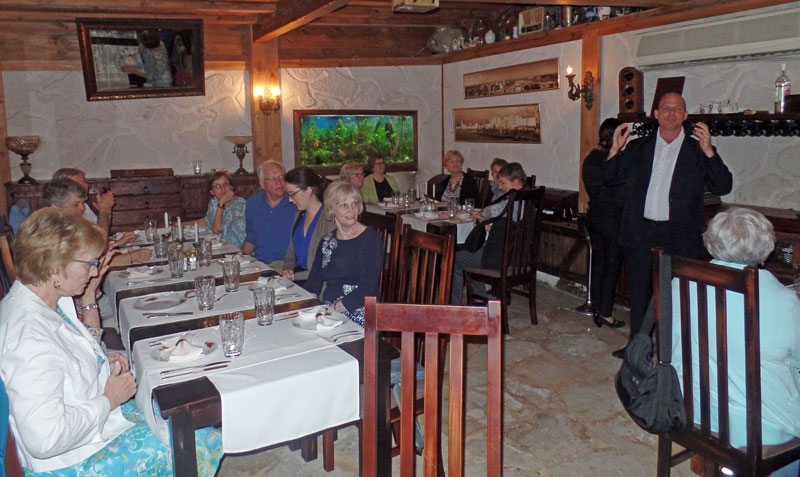
We had a very nice dinner, served family style, with dessert, coffee, aged rum, and cigars. Many people took a cigar but thankfully none smoked one in the restaurant.
++++++++++++++++++++++++++++++++++++++++++++++++
2/2/2016 Departure day. We were up very early for a light breakfast and a 7am departure to the airport. It was a happy band of intrepid travelers singing "Guantanamera" as we drove to the airport.
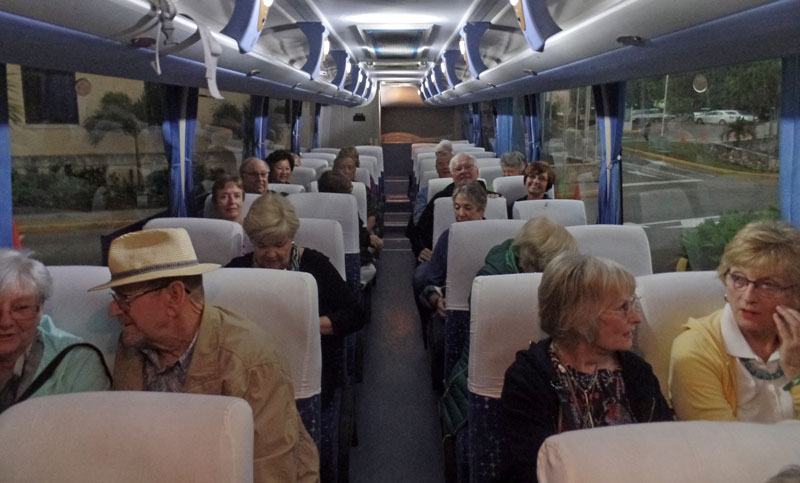
The Havana airport.

We checked our baggage and cleared customs.
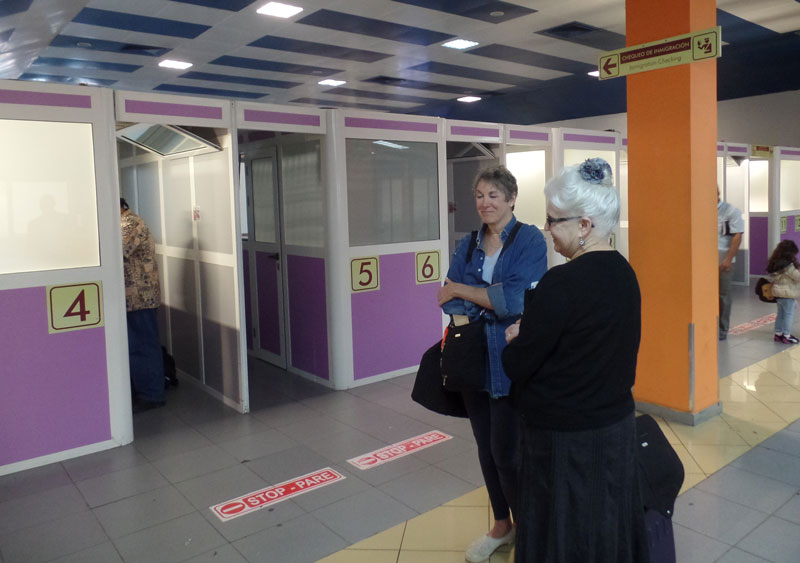
As with the airport in Santa Clara, you walked out to the airplane. This is a 737-400. It was an almost full flight and all tourist class, appropriate for a socialist country. I wonder how Cuba will deal with the airlines that offer premium classes on their flights, once regular airline service is inaugurated.
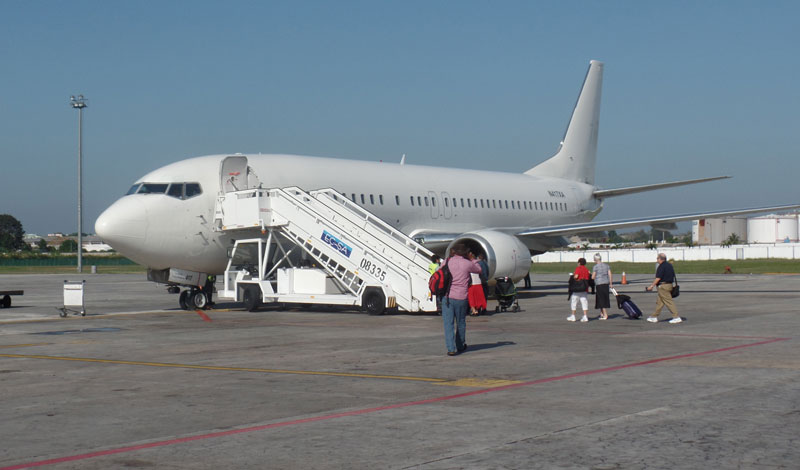
The trip to Miami was uneventful - about 40 minutes. It was a long walk from the gate to the US immigration area. We have Global Entry and were able to get through quickly. Additionally, once people got their luggage there was a very long line to clear the agricultural check, but Global Entry bypasses all that so we got out immediately.
We had a hotel in Miami - Hampton Inn Brickell - and were able to take a MetroRail train to a station about a half block from the hotel. Tickets were $1.10 each. Also very convenient returning to the airport. And the hotel was very nice - recommended.
Our friends, Ray and Jura, live in Miami and we met them for dinner.
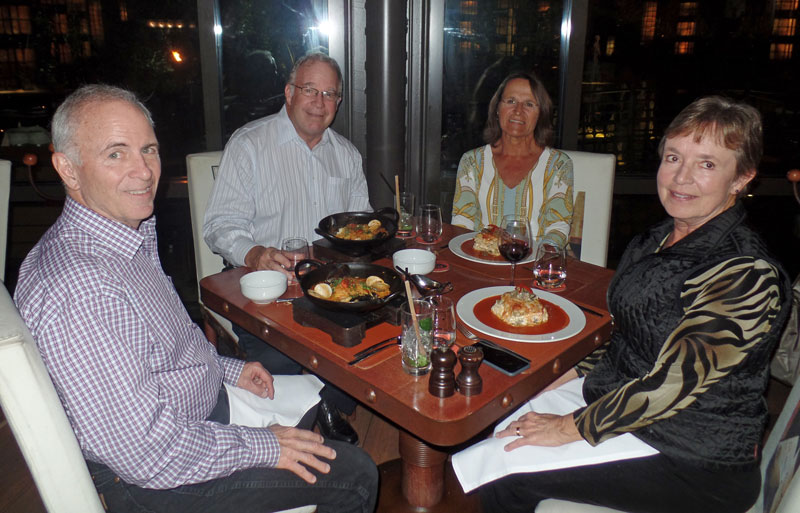
We're heading to New Orleans
You can see our adventures
here.